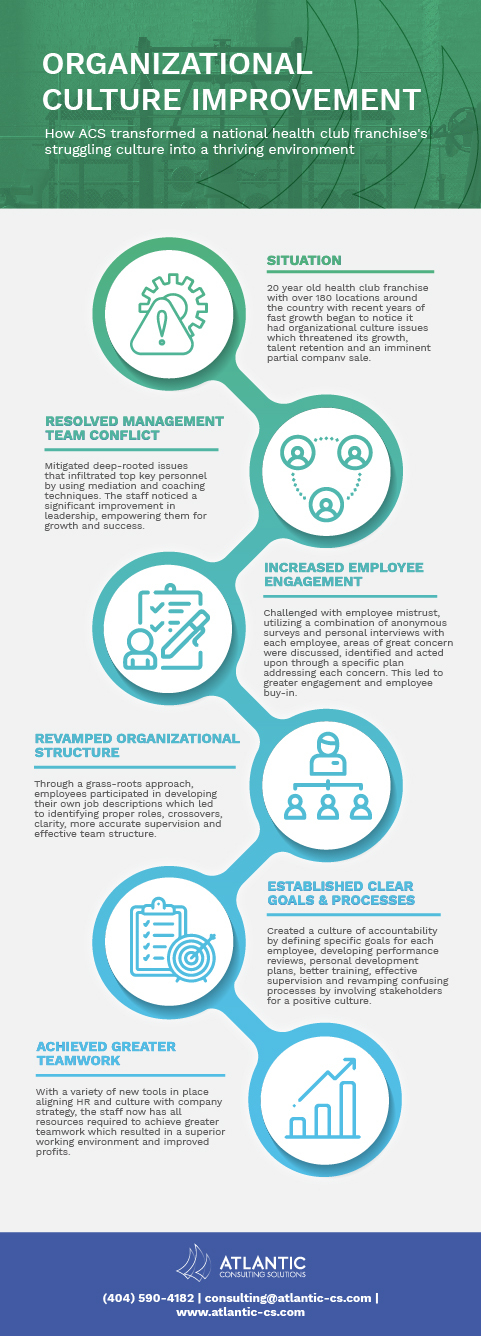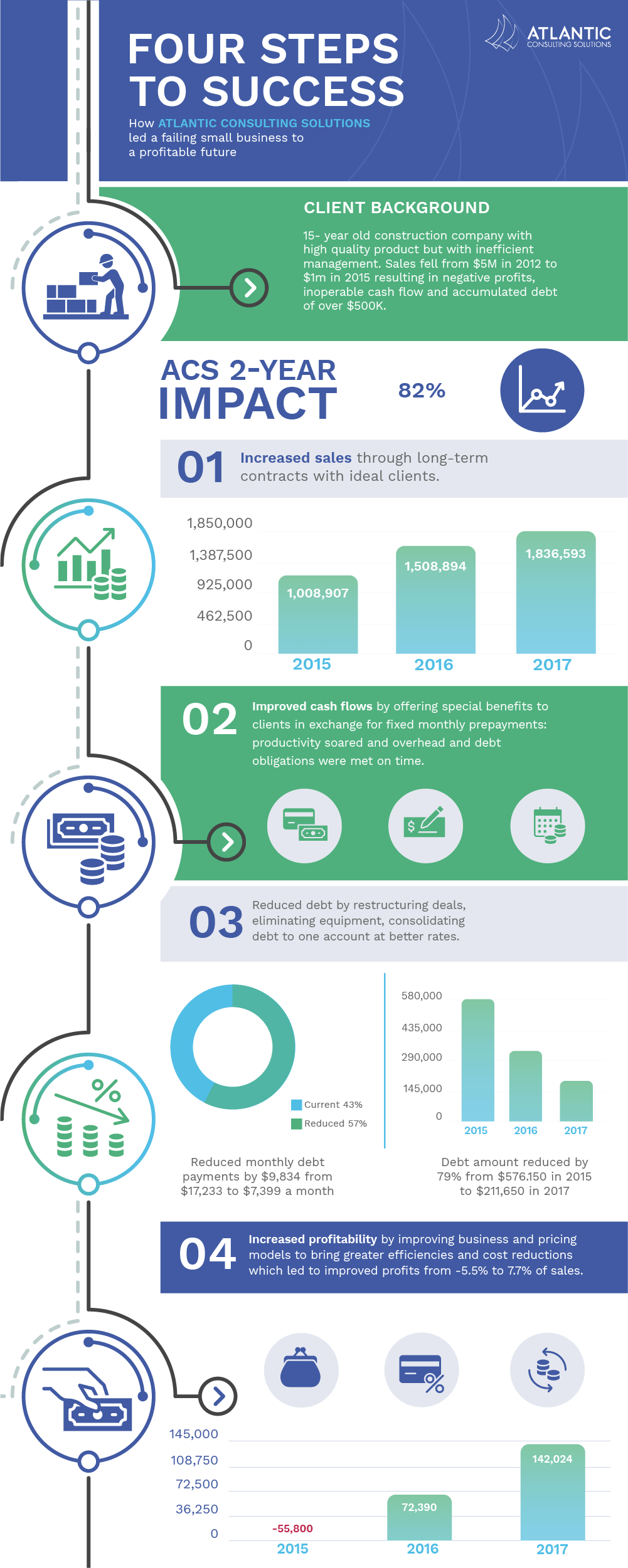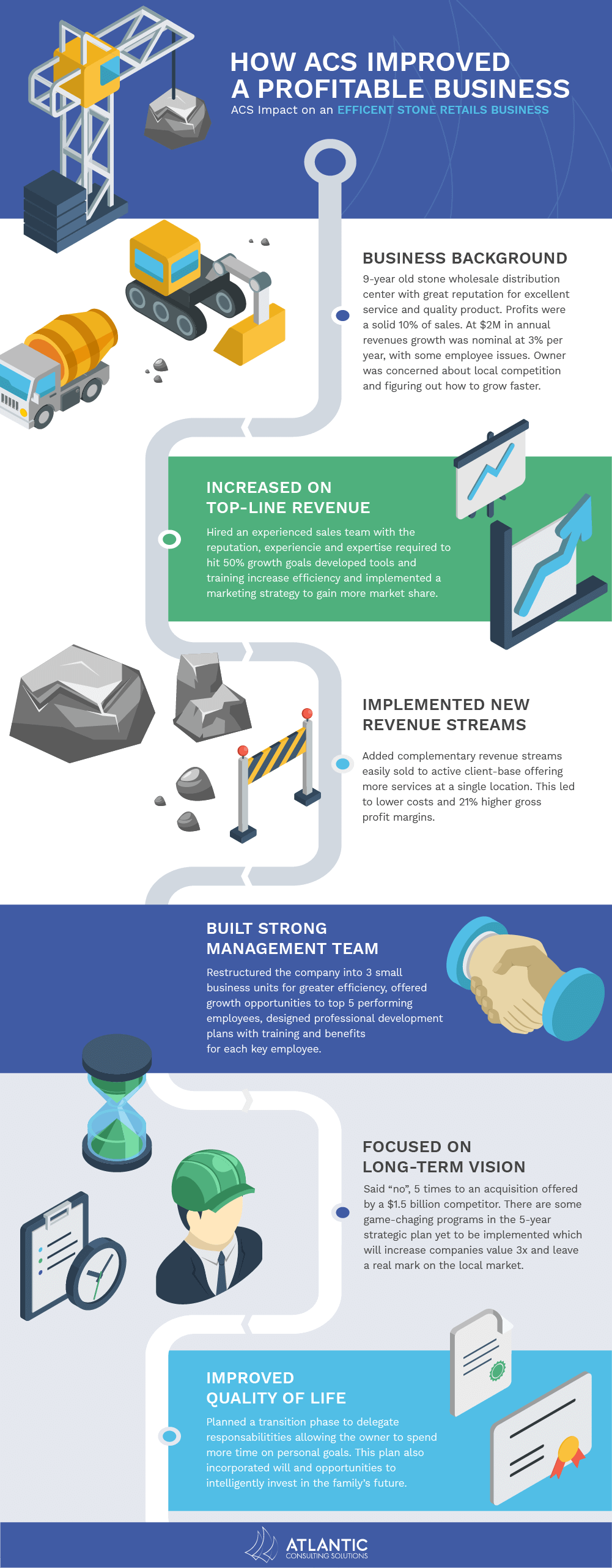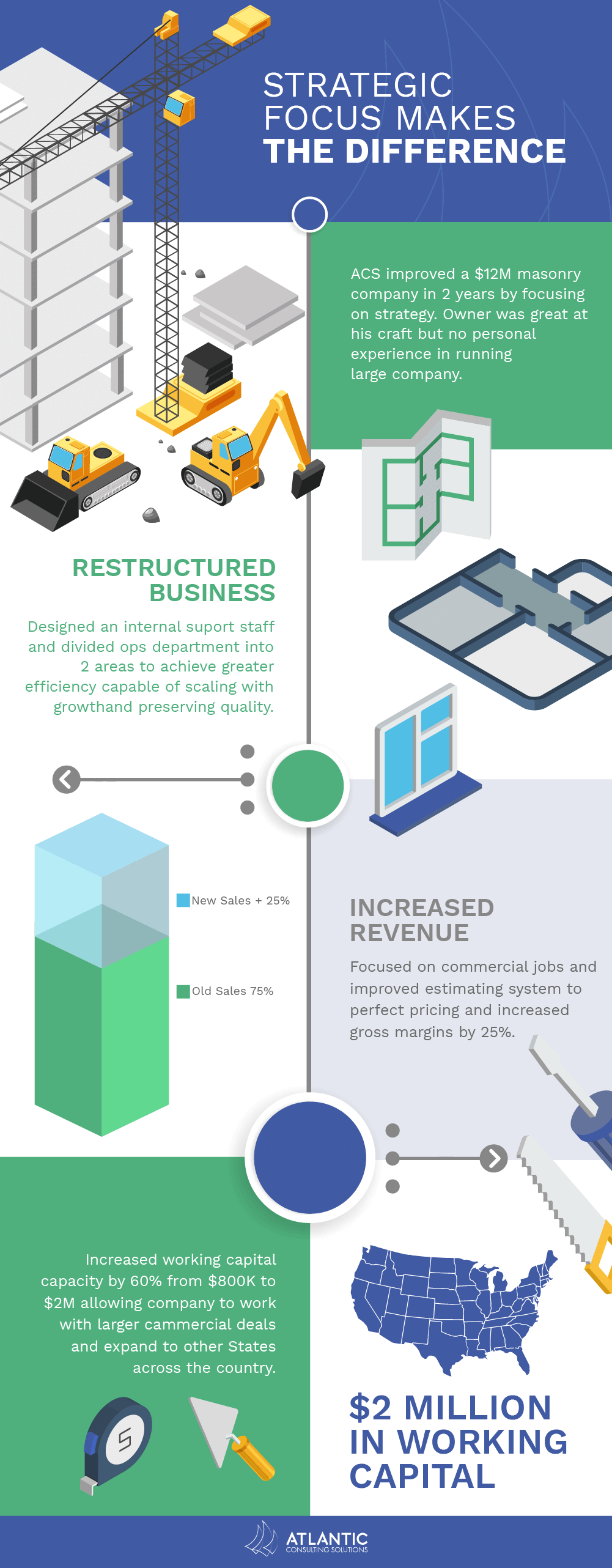
Are Your Company Goals Set for Success?
Company Goals – February 2025 / by Albert Assad
Are Your Company Goals Set for Success? After two decades of working with hundreds of growth-focused businesses in the Atlanta metro area and across North America, I’ve seen firsthand how proper company goals setting separates thriving companies from those that merely survive. Let me share what really works in the trenches, not just what sounds good in theory.
Why Develop Company Goals?
Winston Churchill wisely noted, “Those who fail to plan are planning to fail.” In my experience working with companies generating up to $3-$300 million in revenue, this couldn’t be truer. Think of company goals as your business’s GPS – without them, you’re just driving around hoping to end up somewhere good. Purposeful company goal setting does three critical things:
- First, it aligns your entire organization behind a shared vision. When everyone from the CEO to the newest hire understands where the ship is headed, they row in the same direction.
- Second, it creates accountability at every level. Clear goals make it obvious who’s responsible for what and when.
- Third, it enables meaningful measurement of progress. You can’t improve what you can’t measure, and you can’t measure what you haven’t defined.
I recall sitting in a house that one of my first clients rented after starting my consulting firm to host their company retreat where we would set their 5-year company goals. They had just generated $3.4 million in revenue that first year. One of the two business partners said, “I want to hit $30 million in 5 years”. The others looked at him like he was crazy and some laughed nervously. I asked him, “Are you serious about hitting that company goal?” He immediately responded, “Why not!” So, I took that directive and helped them develop a plan to achieve it. 5 years later they hit $24 million, not quite the $30 million he wanted but pretty darn close. A great part of this was the intentionality of seeking this goals that permeated their everyday activities for the next half decade.
The Company Goals Development Process: Keep It Simple, Make It Stick
Here’s the straightforward process I’ve seen work time and again:
First, begin by refreshing with your team what your mission, vision and values are as a company. This will help you focus and hone-in on who you are and what your purpose is that will serve as the guiding framework for your company goal setting.
Then, to develop your company goals effectively, I recommend brainstorming by using a combination of five proven approaches based on your company’s specific situation:
- The “Past” Method: Revisit company goals you set in prior years that you did not accomplish.
- The “Top-Down” Method: Sit with your management team and identify what should the priorities be.
- The “Future Back” Method: Start three years out, envision your ideal state, then work backward to identify the critical milestones needed to get there. This works particularly well for companies in stable industries with predictable growth patterns.
- The “Bottom-Up Discovery” Process: Gather input from front-line teams about the biggest opportunities and challenges, then synthesize this into company goals. This approach excels in service-based businesses where employee insights are crucial.
- The “Market-In” Approach: Begin with detailed customer and market analysis, then build goals that directly address identified opportunities and threats. This is especially effective for companies in highly competitive or rapidly changing markets.
Once you’ve chosen your approach, implement it by organizing your company goals into the three types of goals framework:
- Foundation Goals (Must-haves):
- Example: Maintain 15% profit margin
- Example: 90% customer retention rate
- Growth Goals (Building blocks):
- Example: Expand from Buckhead to Sandy Springs
- Example: Add two new service lines
- Breakthrough Goals (Game-changers):
- Example: Launch Atlanta’s first mobile [your service]
- Example: Partner with major local brands
Then using the “GPS Method” for each goal, specify them by:
- Grounding the company goal: Specific numbers and dates
- Proving the company goal: Clear success metrics
- Supporting the company goal: Required resources identified
At the end of this step, you should have enough information to determine the importance and impact of each goal. Now, you can select the company goals to work on, using the 4 Disciplines of Execution (4DX) methodology, focusing particularly on these two key disciplines:
- Focus on the Wildly Important Goals (WIGs): Start by identifying what I call your “make-or-break objectives” – the one or two company goals that will have the most significant impact on your company’s success. Ask yourself: “If everything else remained at its current level, what are the one or two areas where change would have the greatest impact?”
- Act on Lead Measures: This is where most companies stumble. Don’t just track your end goal (the lag measure); identify and focus on the critical activities (lead measures) that will drive success. For example, if your WIG is to increase revenue by 30%, your lead measures might be weekly client meetings and proposal submissions.
You can rate your goals on impact (1-5) and effort (1-5). You can even create a graph showing these the level of prioritization into high-impact, reasonable-effort goals. Remember, the best company goals create both clarity and commitment. They should be challenging enough to inspire but realistic enough to believe in.
Who Should Be at the Table? More Than You Think
Goal setting isn’t a solo sport. The most successful companies I’ve worked with involve:
- The leadership team (obvious but essential)
- Department heads (they know the operational realities)
- Key performers from various levels (they provide ground-level insights)
- Customer-facing employees (they know what clients really want)
- Financial team members (they understand the numbers)
Create what I call “Goal Development Circles” – cross-functional teams that meet regularly to refine and update company goals based on real-world feedback.
Proven Tips for Developing Winning Company Goals
- The Rule of Three: Focus on no more than three major company goals per year. I’ve seen companies try to tackle ten goals at once – they usually accomplish none of them well.
- Use the “Reality Check Protocol”: For each goal, ask: Do we have the resources? The skills? The time? The market opportunity? If you can’t answer yes to all four, revise the goal.
- Build in Buffer Time: Take your initial timeline and add 25%. Things always take longer than you think.
- Create “Success Indicators”: Small, measurable markers that show you’re on track before the final goal is reached.
- The “Two Pizza Rule”: coined by the famed CEO Jeff Bezos, have the right mix of people but no more than can be fed by two pizzas, i.e., no more than 12 people.
- Location and Duration Strategy: Hold your goal-setting sessions off-site to minimize distractions and encourage creative thinking. I recommend booking a conference center or hotel meeting room away from your office. The full process typically requires two full days: Day 1 for analysis and initial goal development, Day 2 for refinement and action planning. Break this into two sessions two weeks apart to allow for reflection and data gathering between sessions. For companies over $50 million in revenue, consider extending this to three days to accommodate additional stakeholder input and complexity.
- Professional Facilitation is Critical: One of the most important decisions you’ll make is having your company goal-setting process facilitated by an experienced third-party consultant. Here’s why:
- Objectivity: An external facilitator brings an unbiased perspective, challenging assumptions and pushing past internal politics
- Expert Guidance: They bring proven methodologies and best practices from multiple industries
- Full Participation: When executives aren’t running the meeting, they can fully engage in the strategic thinking process
- Accountability: External facilitators help maintain focus and ensure all voices are heard
- Market Insight: They bring valuable perspective from other companies and industries
At Atlantic Consulting Solutions, we’ve successfully facilitated strategic planning for over 400 growing companies, consistently delivering actionable goals that drive measurable results. Our experience with businesses generating $3-$300 million in revenue across the Atlanta metro area and beyond has helped us develop a proven approach to goal-setting that combines rigorous methodology with practical implementation strategies.
Red Flags and Pitfalls to Avoid
Over the years, I’ve watched companies stumble by:
- Setting “Fantasy Goals” – objectives that sound impressive but lack foundation in reality
- Creating “Orphan Goals” – those without clear ownership or accountability
- Falling into the “Set and Forget Trap” – treating company goal setting as an annual event rather than an ongoing process
- Suffering from “Analysis Paralysis” – getting so caught up in perfect planning that nothing gets done
Implementation: Where the Rubber Meets the Road
Here’s my proven “5-A Implementation Framework”:
- Assign: Every goal needs an owner and clear success metrics
- Announce: Communicate company goals throughout the organization effectively
- Act: Create detailed action plans with specific milestones
- Assess: Review progress regularly (monthly at minimum)
- Adjust: Be willing to modify goals based on new information or changing conditions
Remember my favorite saying: “Goals without implementation are just wishes with better formatting.”
The Bottom Line
In my experience working with hundreds of companies, those that thrive don’t just set goals – they create a goal-driven culture. They understand that company goal setting isn’t an event, it’s a process. It’s not about perfection, it’s about progress. And most importantly, it’s not about the company goals themselves, but about the growth and transformation they inspire.
Your company’s future depends not on having perfect goals, but on having the right company goals, pursued with persistence and adjusted with wisdom. Start there, and success will follow.
Business Hours
Monday-Friday: 8am to 6pm EST
Saturday: Closed
Sunday: Closed
*Our meeting locations are flexible: we can meet at your office or at any ROAM Workspace and Paradigm Workhub locations around the metro-Atlanta area.








